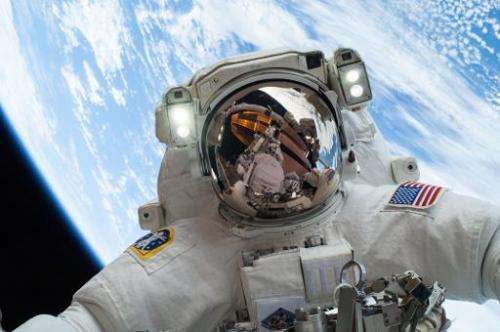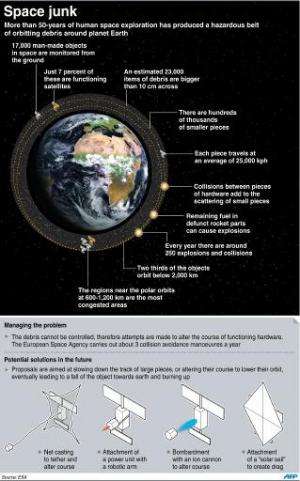Australia to prevent 'Gravity' space crash with lasers (Update)

Australian scientists said Friday they aim to prevent a real-life version of the space disaster scenario portrayed in Oscar-winning film "Gravity" by removing extraterrestrial debris with lasers.
"We now want to clean up space to avoid the growing risks of collisions and to make sure we don't have the kind of event portrayed in 'Gravity'," said Matthew Colless, head of the Research School of Astronomy and Astrophysics at the Australian National University.
In the film, which won seven Oscars at this year's Academy Awards, two astronauts played by George Clooney and Sandra Bullock are left drifting in the void after a collision between satellite debris and their spacecraft.
Later this year the new Space Environment Management Cooperative Research Centre will begin research on how to better track tiny pieces of debris and predict their trajectories, largely based at Mount Stromlo Observatory in the Australian capital of Canberra.
But it will ultimately aim to knock them off their paths by hitting them with Earth-grounded lasers, forcing them to slow down and fall back into the atmosphere, where they will burn up harmlessly.
Colless said something needed to be done to remove space junk given the ever growing amount of discarded material orbiting Earth—from tiny screws to parts of old rockets.

"There are hundreds of thousands of pieces of space junk in orbit that are big enough to do serious damage to a satellite or space station," he said.
"Everywhere humans have been in space, we leave some trash behind.
The new centre, expected to be fully operational by mid-2014, will also include Mount Stromlo-based EOS Space Systems, Lockheed Martin, the NASA Ames Research Centre, Japan's National Institute of Information and Communications Technology, telecommunications firm Optus and Australia's RMIT University.
The centre's chief executive Ben Greene warned of the risks to satellites and space exploration.
"There is now so much debris that it is colliding with itself, making an already big problem even bigger," Greene said.
"A catastrophic avalanche of collisions that would quickly destroy all satellites is now possible.
"Our initial aim is to reduce the rate of debris proliferation due to new collisions, and then to remove debris by using ground-based lasers."
More than 20,000 bits of cast-off equipment, including old satellites, pieces of rocket and other fragments are uselessly orbiting the Earth in a band 800-1,400 kilometres (500-900 miles) from the surface of the planet, and at terrific speed.
© 2014 AFP



















